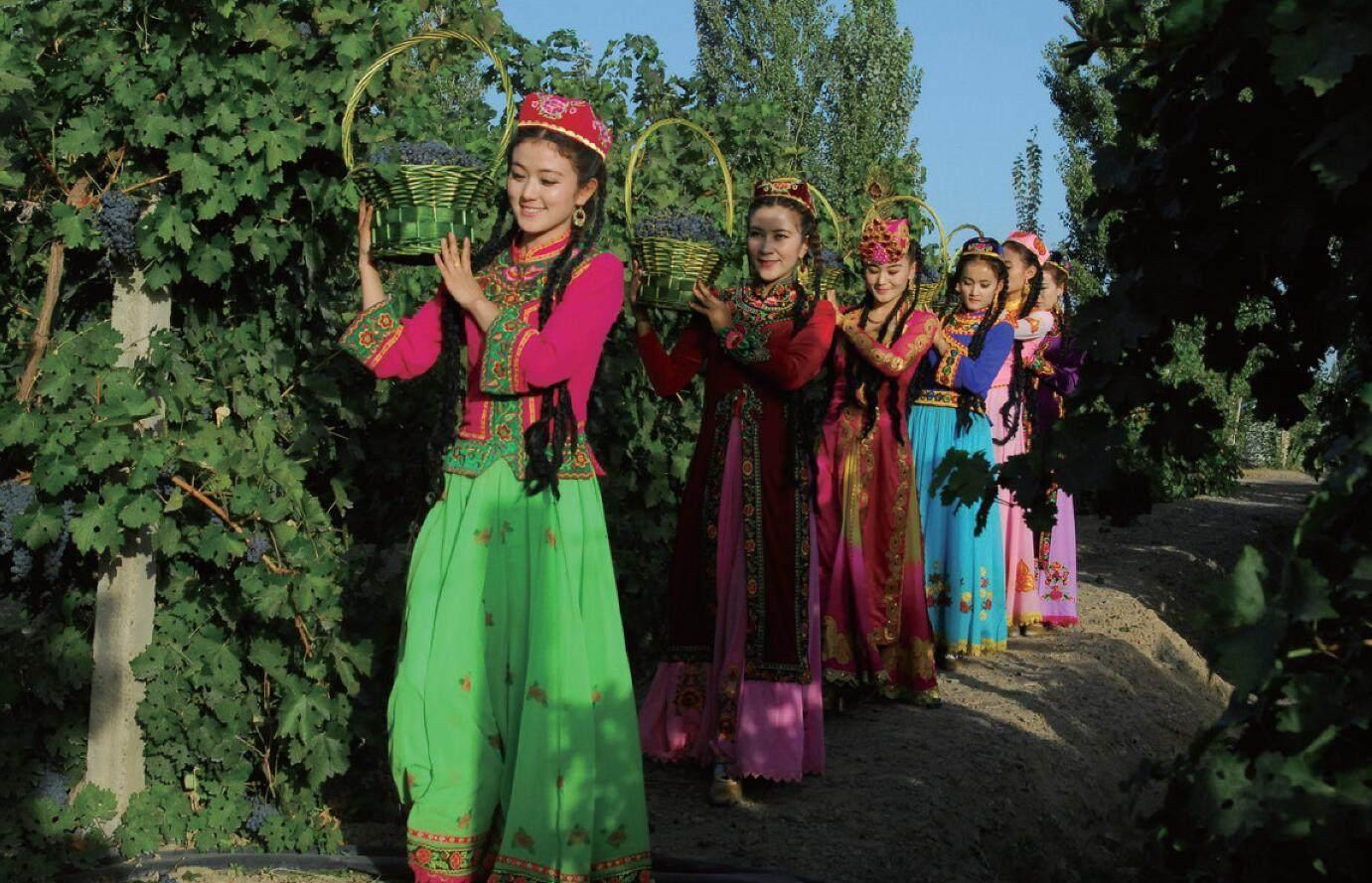Visiting the Inheritors of Intangible Cultural Heritage in Yili Prefecture in Person
2024-05-14



The Value Discovery and Reconstruction of the Silk Road Intangible Cultural Heritage: A Case Study of the Xinjiang Section of the Silk Road
Yang Hong, Zheng Liang
Intellectual Property Publishing House
November 2022
52.00 (CNY)
Yang Hong
Yang Hong is a professor in the Department of Arts Management at the School of Cultural Industries Management, Communication University of China, director of the Intangible Cultural Heritage Communication Research Center, and holds a PhD in art theory and intangible cultural heritage and a postdoctoral fellow in design.
Zheng Liang
Zheng Liang is the dean of the School of Literature and the School of Film at Jimei University. He is a distinguished professor of “Minjiang Scholars” in Fujian Province, a consulting expert on the intangible cultural heritage research and training program of the Ministry of Culture and Tourism and the Ministry of Education, a member of the expert database of 10,000 outstanding talents in innovation and entrepreneurship of the Ministry of Education, vice president of the Fujian Aesthetics Society, and director of the Fujian Marine Culture and Creative Industry Research Base.
Yili Prefecture is located in the western part of the Xinjiang Uyghur Autonomous Region, bordering Kazakhstan to the west. It has historically been a melting pot of multiple civilizations and ethnicities, where different religious beliefs, languages, and customs influence each other, leading to the intangible cultural heritage resources of Yili Prefecture displaying distinct multi-ethnic cultural characteristics. In modern times, the various categories of intangible cultural heritage projects in Yili Prefecture have evolved naturally while also being influenced by economic, social, and cultural development, gaining distinct characteristics of temporal change. Research on the contemporary state of intangible cultural heritage primarily includes two aspects: diachronic inheritance conditions and synchronic changes, where research on synchronic changes holds significant importance for the protection, inheritance, and development of intangible cultural heritage. Through field visits to various categories of intangible cultural heritage projects in Yining City, Nileke County, Tekes County, and others in Yili Prefecture, the aim is to summarize the contemporary characteristics of these projects and their possible impact on the survival and development of intangible cultural heritage resources. This research focus also helped the research team study the contemporary inheritance and development paths of traditional fine arts and skills-related intangible cultural heritage projects.
Based on the resilience and value curve reference system constructed in this book, its possible to analyze both the positive and negative impacts on the traditional Kazakh costumes, studying the main factors causing changes in the resilience and value curve of this intangible cultural heritage project. From the detailed case study of the inheritance and development of the traditional Kazakh costume by Gulnur Jines Nurta Aken that follows, it is evident that while the resilience of this intangible cultural heritage project has strengthened, it has also positively contributed to the preservation of its non-utilitarian value, suggesting that the projects value has increased in the contemporary era.
The Main Support for Orderly Inheritance
What supports are needed to transition from being critically endangered to orderly inheritance? In early 2019, in the clothing factory of Gulnur Jines in Yining City, Yili Prefecture, Xinjiang, we first met her and the “Tasbulak” brand products she managed. The blue brand logo hanging at the factory entrance was very eye-catching on the bleak winter streets, and behind this brand are the more dazzling Kazakh costumes and Kazakh yurts. During that year, we kept in touch with her. Her team spent half a year in the “Silk Road Light” tourism town designing, embroidering, and setting up a traditional Kazakh yurt. Her hand-embroidered artworks and Kazakh yurt models also participated in the “Yili Gift” tourism product competition. This diligent and hardworking national-level representative inheritor of intangible cultural heritage has been documenting her journey of inheriting Kazakh traditional skills and the trajectory of intangible cultural heritage, promoting the integration of culture and tourism in her social circle. It can be said that the inheritance and development of traditional Kazakh costume skills in Yili Prefecture are typical cases found during the research teams investigation.
Treasure the Skills and Culture Passed Down
Gulnur Jines is a representative inheritor of the national intangible cultural heritage project of Kazakh costumes, which has also been included in the first batch of the national traditional crafts revival catalog. Therefore, Jin Aisigulis work encompasses both inheritance and revitalization, including the Kazakh Traditional Skills Research Studio and the Tasbulak Ethnic Garments Limited Liability Company. In my view, she is more passionate about the work in the studio.
Entering the studio, several books of organized traditional Kazakh patterns and manuscripts were on the table, along with recently designed ethnic garment styles. Her affection for these patterns and manuscripts was evident, and she explained each one to us in detail. Over the years, she has been collecting and organizing the folklore and skills of her people who are on the brink of extinction, placing the utmost importance on protection and inheritance, diligently recording and researching the cultural connotations behind various styles and patterns. The studio focuses not only on inheriting skills but also on excavating and organizing the culture behind those skills, thus rightfully earning the word “research” in its name. We asked her about the traditional needle techniques used in Kazakh felt and fabric embroidery, and she patiently drew them for us while phonetically translating their names, demonstrating both patience and professionalism.
Gulnur Jines took us to view the exhibition hall, where sets of traditional costumes with exquisite materials, vibrant colors, and meticulous tailoring, modernized ceremonial dresses, and functional clothing were displayed before us, showing that Kazakh cultural traditions and aesthetic tastes have been beautifully continued through Gulnur Jiness collection, preservation, inheritance, and innovation. In recent years, she visited many pastoral counties such as Gongliu, Zhaosu, Tekes, Xinyuan, Nileke, etc., and collected and organized more than 20 types of embroidery methods like Basba, Basterma, Hosu, Yili Mi (transliteration) and others, more than 130 kinds of traditional Kazakh patterns like rams horn flowers, grass heart flowers, horseshoe flowers, and more than 20 types of felt house styles like princess palaces, bridal chambers, herders yurts, artists halls, hunters rooms, and maidens boudoirs, some of which she embroidered or drew herself based on the oral accounts of local elders.
Gulnur Jines explained the different types of traditional felt houses, including their functions, sizes, and interior decoration differences: The boudoirs built for daughters of wealthy families before marriage had the door lintels adorned with fragrant plants like mugwort, sagebrush, and spruce branches; The artists hall built specifically for talented singers and dancers contained various musical instruments; A felt house used specifically for air-drying meat, similar to a gazebo, had the bottom meter or so open for ventilation; Hunters rooms were generally more austere, for easy disassembly and assembly.
She also patiently introduced us to the rules for selecting patterns for different Kazakh items. Carpets often depict plant motifs. Wooden utensils are decorated with geometric shapes, the sun and moon shapes, and simple floral patterns. Eaves or the main entrance doors are decorated with continuous floral patterns or continuous triangular patterns. Wooden boxes or cabinets have regular geometric patterns. The patterns on garments are the most varied, with specialized decorative patterns for tops or skirts, collars, cuffs, and fronts, and different patterns for different ages, professions, and occasions, with wedding attire and folk artists costumes, as well as the costumes of teenagers and the elderly, all featuring distinct patterns. Now, this indigenous knowledge is mastered by very few. She mentioned that the Kazakhs are nomadic people, and animals hold an important place in their hearts. Therefore, patterns like ram-horn shapes, horse-mouth shapes, bird-wing shapes, and camel-paw shapes are widely used in the lives of Kazakh people. Gulnur Jines places great emphasis on the accurate use of these patterns and hopes to spread knowledge of Kazakh culture through her efforts.
杂志排行
中国新书(英文版)的其它文章
- Dujiangyan
- Traditional Chinese Crafts in the Context of Silk Road Civilization -- Interview with Master Li Maodi, a Master of Zhuoni Tao Inkstone Making in Gansu’s Zhuoni
- Encounters and Cultural Boundaries Between East and West: Cultural Transmission Under the Belt and Road Initiative
- The Splendor of the Maritime Silk Road: A Major Theme of Globalization Leading to the Americas
- Revelations from the Civilizations of the Silk Road
- The Historical Context of the Silk Road
